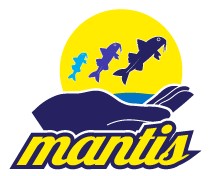


The MANTIS project aims to provide scientific recommendations for the establishment of a network of Marine Protected Areas to increase fisheries sustainability in the Central Mediterranean.
The European Common Fisheries Policy obliges Member States to maintain marine resources at levels which can produce maximum sustainable yields, and emphasises the importance of implementing an ecosystem approach to fisheries management. Despite this, most of the demersal fisheries in the Mediterranean target overfished stocks, are characterised by high juvenile fishing mortality rates, and produce significant amounts of discards. Such unsustainable fishing practices result in negative impacts on marine ecosystems, and limit the profitability of the fishing industry.
To conserve marine biodiversity and increase the productivity of fished species, it is important to protect sensitive habitats and ensure that target species are able to reproduce. A key requirement is to shift the size at first capture to larger individuals. Traditionally, mesh size regulations are used to protect juveniles from fishing impacts, but increasing the mesh sizes of nets used by fishers to avoid catching juveniles of certain species, for example Hake (Merluccius merluccius) and Red Mullet (Mullus barbatus) in the case of trawl nets, is not always possible since this would also result in lower catches of valuable small-sized commercial species, such as the valuable Giant Red Shrimp (Aristaeomorpha foliacea), the Deep-Water Rose Shrimp (Parapenaeus longirostris) and the Norway Lobster (Nephrops norvegicus). An alternative management strategy is to reduce catches of juveniles by protecting the nursery habitats where they aggregate through establishment and implementation of Marine Protected Areas (MPAs). Such MPAs can also be an effective way to protect spawning aggregations which are particularly vulnerable to fishing.
Against this background, the main objectives of MANTIS are to:
To achieve these objectives MANTIS’ activities are organised into 5 Work Packages (WP):
The MANTIS project is funded by the European Commission Directorate General for Maritime Affairs and Fisheries (DG MARE), and coordinated by the Italian National Research Council (CNR). The participation of Maltese partners in the project is a collaborative effort between the Department of Biology (DoB) and the Department of Fisheries and Aquaculture within the Ministry for Environment, Sustainable Development, and Climate Change (MESDC). The role of the DoB is the provision of technical expertise, and taking the lead on WP3 and WP4 in particular.
The MANTIS project consortium also includes the Italian National University Consortium for Marine Sciences (CoNISMA), the Italian National Institute of Oceanography and Experimental Geophysics (OGS), the Croatian Institute of Oceanography and Fisheries (IOF), the cooperative for Fisheries and Aquaculture Economic Research (Nisea), the World-Wildlife-Fund (WWF), and Oceana. Further information on the project as well as regular progress updates can be found on the project website.